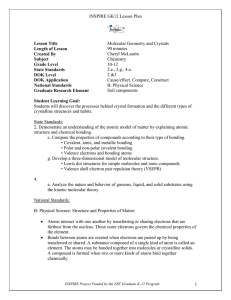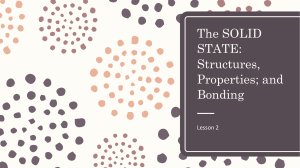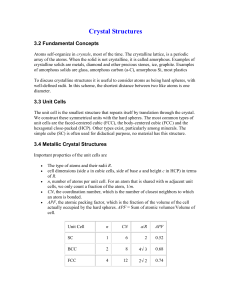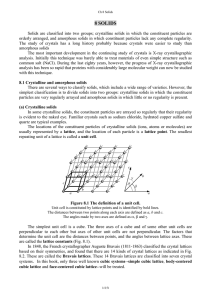Phases of Matter . Solids. Phases of Matter Matter, under ordinary
advertisement
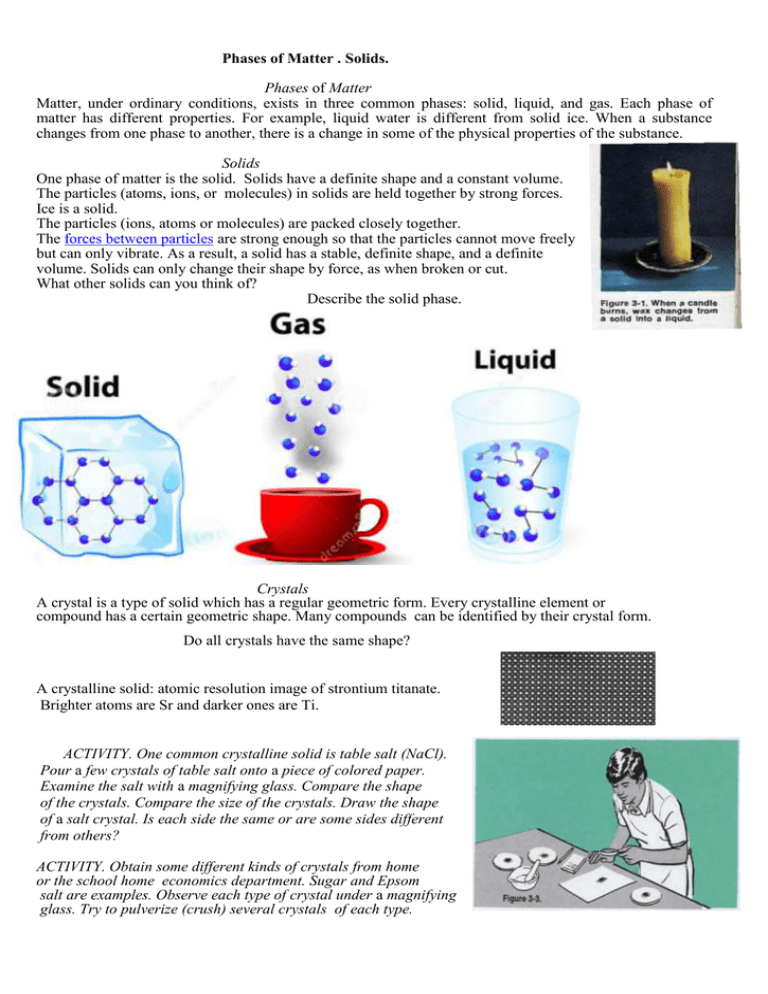
Phases of Matter . Solids. Phases of Matter Matter, under ordinary conditions, exists in three common phases: solid, liquid, and gas. Each phase of matter has different properties. For example, liquid water is different from solid ice. When a substance changes from one phase to another, there is a change in some of the physical properties of the substance. Solids One phase of matter is the solid. Solids have a definite shape and a constant volume. The particles (atoms, ions, or molecules) in solids are held together by strong forces. Ice is a solid. The particles (ions, atoms or molecules) are packed closely together. The forces between particles are strong enough so that the particles cannot move freely but can only vibrate. As a result, a solid has a stable, definite shape, and a definite volume. Solids can only change their shape by force, as when broken or cut. What other solids can you think of? Describe the solid phase. Crystals A crystal is a type of solid which has a regular geometric form. Every crystalline element or compound has a certain geometric shape. Many compounds can be identified by their crystal form. Do all crystals have the same shape? A crystalline solid: atomic resolution image of strontium titanate. Brighter atoms are Sr and darker ones are Ti. ACTIVITY. One common crystalline solid is table salt (NaCl). Pour a few crystals of table salt onto a piece of colored paper. Examine the salt with a magnifying glass. Compare the shape of the crystals. Compare the size of the crystals. Draw the shape of a salt crystal. Is each side the same or are some sides different from others? ACTIVITY. Obtain some different kinds of crystals from home or the school home economics department. Sugar and Epsom salt are examples. Observe each type of crystal under a magnifying glass. Try to pulverize (crush) several crystals of each type. Prepare a chart showing relative size, shape; strength (easy or hard to pulverize) of each type. Include other properties you observe. Crystals contain atoms, ions, or molecules. For example, a graphite crystal and a diamond both contain carbon atoms. A sodium chloride crystal contains sodium and chloride ions. Ice contains water molecules. Figure 3. Two kinds of ions make up the sodium chloride crystal (a). A crystal of sodium chloride looks like a cube (b). Surfaces of crystals are called faces. The faces form definite angles with each other. shapeType75fBehindDocument1pWrapPolygonVertices8;8;(21498,0);(10181,0);(10181,1125);(0,1125);(0,2 1498);(10512,21498);(10512,21387);(21498,21387)pib The state or phase of a given set of matter can change depending on pressure and temperature conditions, transitioning to other phases as these conditions change to favor their existence; for example, solid transitions to liquid with an increase in temperature.






